Conservation efforts in Africa are stronger now than they’ve ever been. However, unfortunately, extinction is nothing new to this vast continent. Africa is home to some of the greatest biodiversity on the planet. Our closest living relatives, chimpanzees, call the forests of Africa home. And, some of the most striking creatures on our planet – like cheetahs, leopards, lions, rhinoceros, and elephants – are currently in danger of extinction. Here, we’ll learn about ten extinct animals of Africa, and why they disappeared.
1. Western Black Rhinoceros
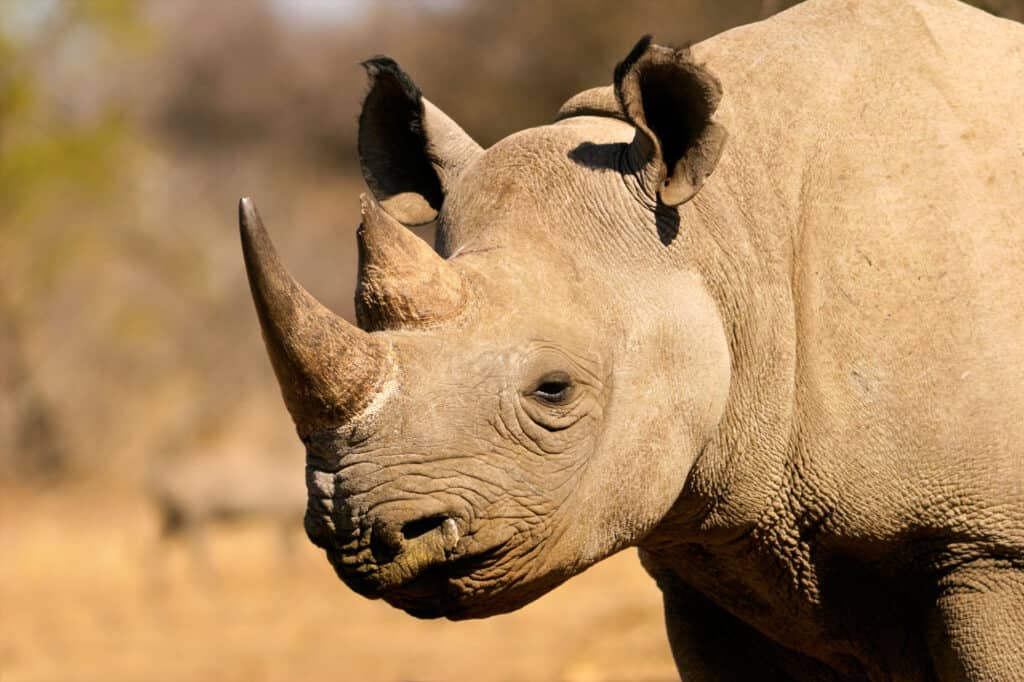
Western black
rhinoceros
went extinct due to poaching.
©iStock.com/EcoPic
Officially declared extinct in 2011, the western black rhinoceros, also known as the West Africa black rhinoceros, once lived across sub-Saharan Africa. These extinct animals of Africa stood 4 – 6 feet tall and weighed up to 3,000 pounds. Western black rhinos had a double horn, which, unfortunately, was one of the main causes of the species demise. Overhunting and later poaching drastically reduced the black rhino’s population between 1900 and 2011 when they became extinct.
2. Quagga

The quagga is an extinct subspecies of the plains zebra.
©miha de/Shutterstock.com
The quagga was similar to the zebras of today. Instead of stripes covering the entirety of its body, these quadrupeds only had stripes along their heads and necks. Quaggas, like many of the extinct animals of Africa, were hunted to extinction in the 19th century. Like other herbivores, such as cattle and horses, the quagga ate grass. They stood 4 to 5 feet tall, with short legs and stocky bodies, similar to those of donkeys. Unlike zebras, which are black and white, quagga were medium brown, with thin cream colored stripes.
3. Bluebuck
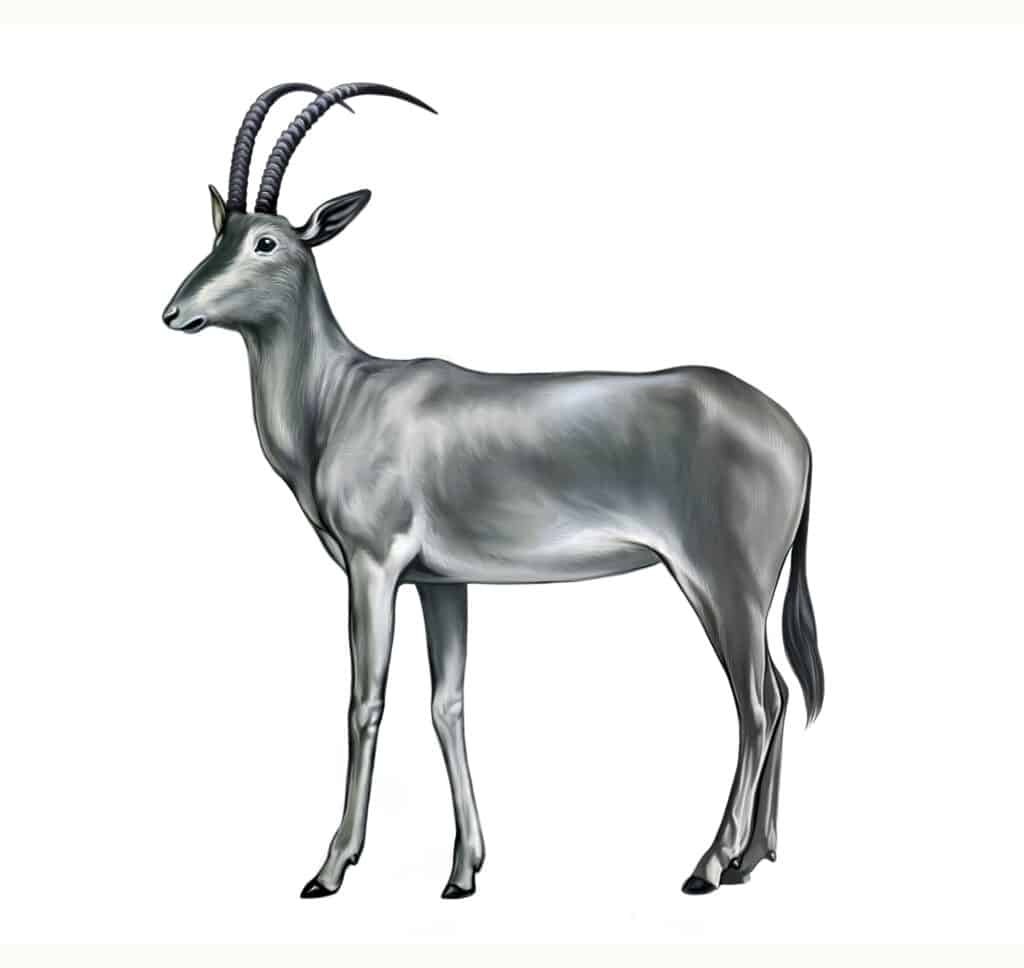
The bluebuck is an extinct African antelope
©Liliya Butenko/Shutterstock.com
Bluebuck, also known as blue antelope, lived in Africa until about 1800. These relatives of the sable antelope were one of the first large animals to go extinct in Africa in modern times. Bluebuck had slender, graceful bodies with long, narrow legs and small hooves. They stood around four feet tall; their name comes from the gray-blue color of their fur. Perhaps the most striking feature of these extinct antelope was their horns. Bluebuck had two long, black, curved horns that stretched up from the top of their head towards their back. Unfortunately, a combination of climate change-induced habitat loss and overhunting by humans led to the bluebuck’s extinction.
4. Zanzibar Leopard
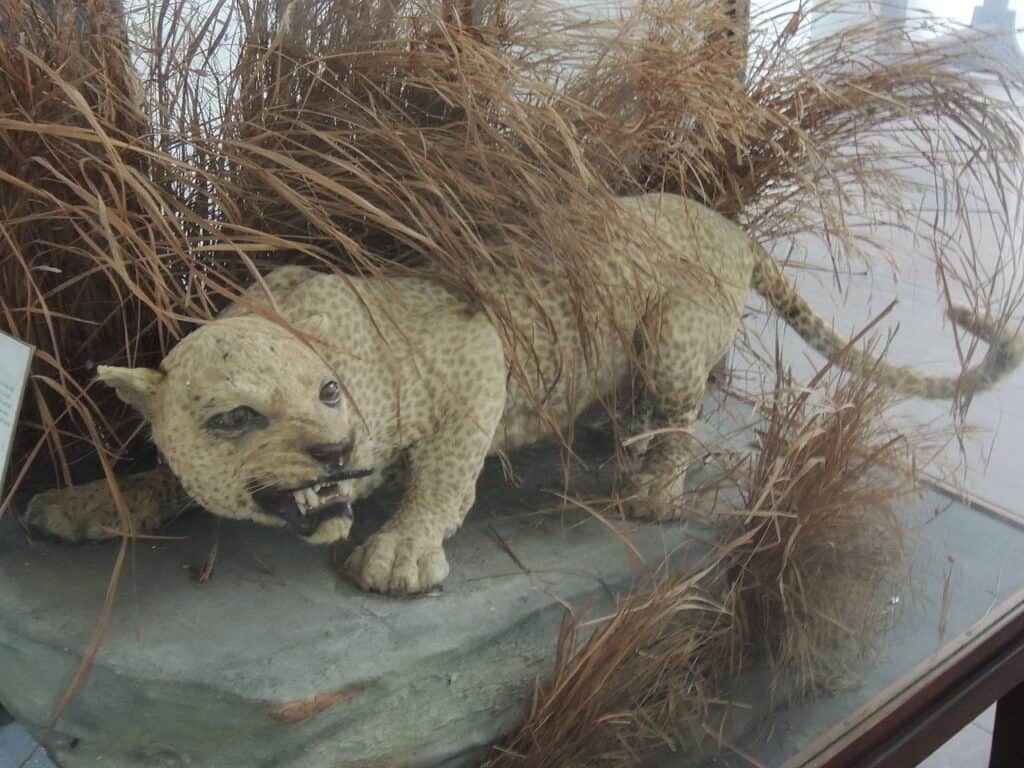
Zanzibar leopards were once the largest predators on Unguja Island.
©Peter Maas / CC BY-SA 3.0 – License
The Zanzibar leopard was a smallish leopard native to Unguja Island in Zanzibar. Despite their small size, these extinct animals of Africa were once the largest carnivores and apex predators on the island. They were officially declared extinct in the latter half of the twentieth century, with only one potential sighting recorded in 2018. Unfortunately for Zanzibar leopards, local culture associated them with witchcraft and evil doing, which led to an island wide campaign of extermination.
5. Atlas Bear
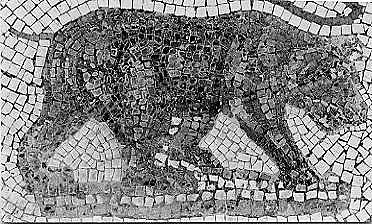
Atlas bear went extinct in the 1870s.
©public domain – License
These extinct animals of Africa were the only African bear that survived on the continent into modern times. Atlas bears inhabited the Atlas Mountains of North Africa from Morocco in the west to Libya in the east. They weighed up to 900 pounds and had solid bodies with dark fur on their backs, and red-brown fur on their undersides. These carnivores were hunted to extinction over the course of nearly 2,000 years of human civilization. They are believed to have gone extinct in the 1870s.
6. Barbary Lion

The extinction of Barbary
lions
was caused by human hunting.
©Alfred Edward Pease (29 June 1857 – 27 April 1939) / public domain – License
The Barbary lion, also known as the Berber lion, Egyptian lion, or Atlas lion, was one of the most magnificent extinct animals of Africa. These lions lived on Africa’s barbary coast until well into the twentieth century. Their extinction was caused both by human hunting of the lions themselves and from overhunting of game species. Barbary lions largely depended on gazelle, wild boar, and Barbary stags for food. So, when these species dwindled, lion populations dipped as well. Today, scientists believe that many captive lions likely have some Barbary lion DNA, as these lions were often captured for human viewing.
7. Large Sloth Lemur
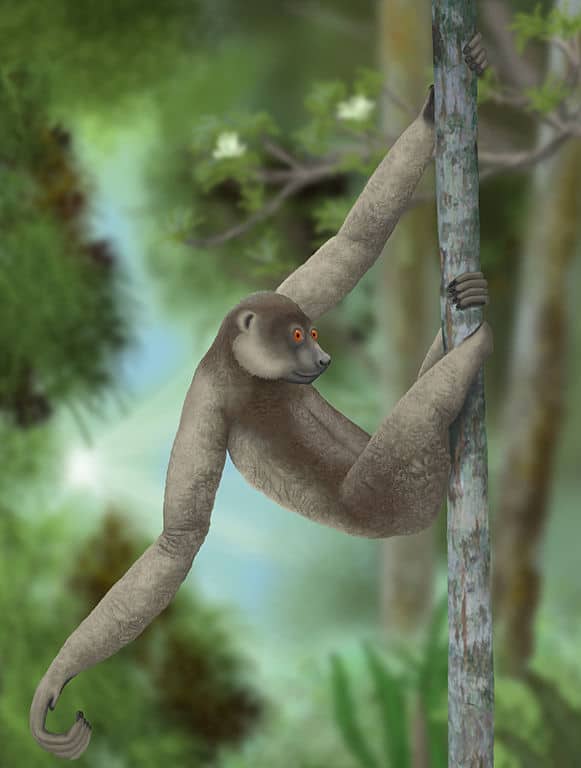
Native to Madagascar, large sloth lemurs went extinct a long time ago.
©Smokeybjb / CC BY-SA 3.0 – License
The large sloth lemur lived on the island of Madagascar. These extinct animals of Africa are one of many Madagascan animals that are now extinct, including giant fossa, giant lemurs, and elephant birds. Though no one knows for sure what factors caused the extinction of the large sloth lemur, it is generally agreed upon that humans played a role.
8. Cape Lion
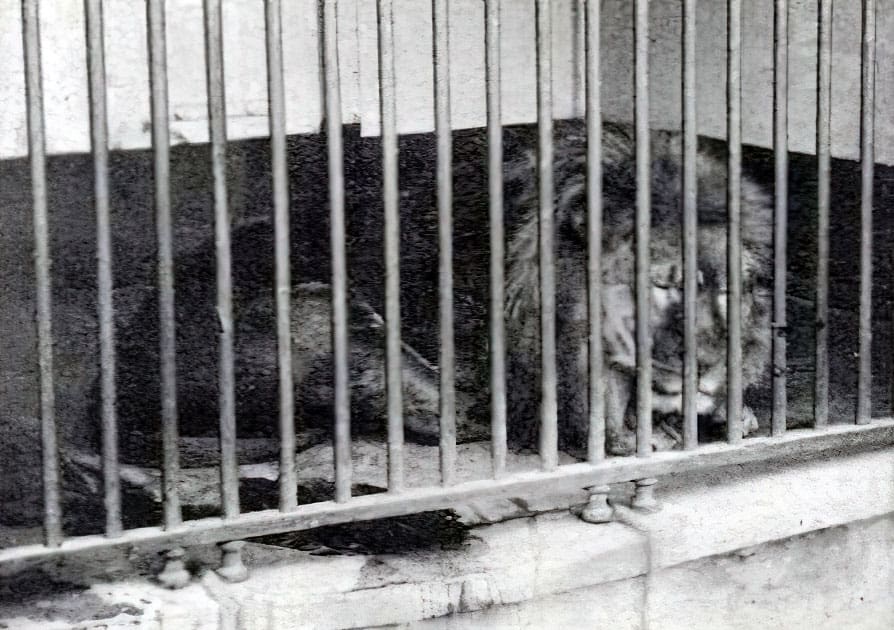
Cape lions went extinct in the 1850s.
©public domain – License
These extinct animals of Africa lived in the southernmost part of Africa, along the Cape of Africa. They were hunted to extinction in the wild in the 1850s, with some specimens persisting in zoos for several more decades. Cape lions were famously large, with very dark manes; they grew to around 600 pounds. Cape lions were apex predators, like tigers and sharks, and mainly ate antelope. When Europeans arrived in southern Africa, their hunting severely depleted antelope populations, which in turn caused Cape lion populations to drop. In the end, a combination of dwindling food sources and overhunting by humans led to the Cape Lion’s demise.
9. Cape Warthog
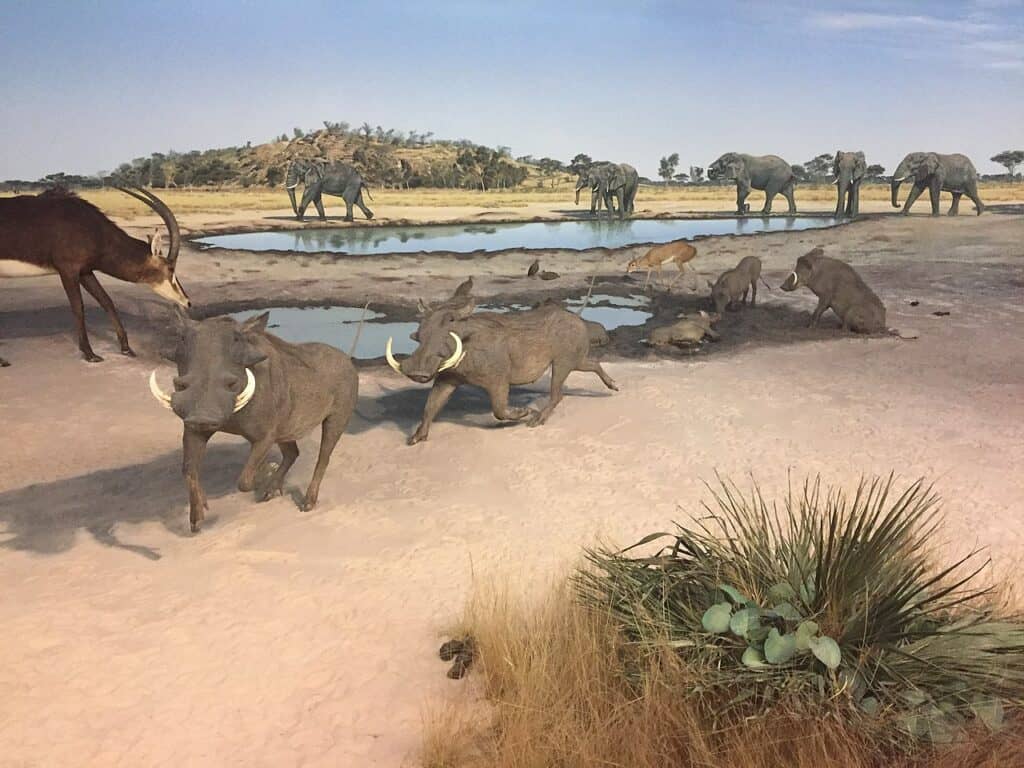
The Cape warthog subspecies became extinct in the 1860’s
©Avrand6 / CC BY-SA 4.0 – License
Cape warthogs are a subspecies of the desert warthog. Today, desert warthogs survive in Somalia and Kenya, but, the Cape warthog became extinct in South Africa in the 1860’s. Cape warthogs were large animals, weighing up to 170 pounds and standing four feet tall. These extinct animals of Africa ate flowers, leaves, grasses, and tubers. As herbivores, they faced continuous threats from lions, hyenas, cheetahs, leopards, and humans.
10. Small Mauritian Flying Fox

These small flying foxes disappeared in the 19th century
©citron / CC BY-SA 3.0 – License
These extinct animals of Africa were classified as megabats. Small Mauritian flying foxes lived on Mauritius Island and Reunion Island in the Indian Ocean until the 19th century. Unlike vampire bats, they fed on fruit and fruit nectar, and slept in hollow trees and caves at night. Also known as rougettes, Mauritian flying foxes likely went extinct due to a combination of human hunting and habitat loss. They were heavily dependent on tree coverage and the availability of fruit bearing plants. So, when these disappeared, so too did the flying foxes.
Up Next
The photo featured at the top of this post is © iStock.com/EcoPic
Sources
- Research Gate, Available here: https://www.researchgate.net/publication/232678198_Rediscovery_of_the_Cape_Warthog_Phacochoerus_aethiopicus_A_Review
- , Available here: https://www.cs.mcgill.ca/~rwest/wikispeedia/wpcd/wp/c/Cape_Lion.htm
- , Available here: https://www.nhm.ac.uk/discover/news/2020/june/only-known-drawing-of-extinct-giant-sloth-lemur-found-in-cave.html
- Britannica, Available here: https://www.britannica.com/animal/Barbary-lion
- Bear Conservation, Available here: http://www.bearconservation.org.uk/atlas-bear-extinct/
- Britannica, Available here: https://www.britannica.com/animal/black-rhinoceros
- Save the Rhino, Available here: https://www.savetherhino.org/rhino-species/black-rhino/western-black-rhino-declared-extinct-in-2011-journalists-reporting-news-two-years-later/
Thank you for reading! Have some feedback for us? Contact the AZ Animals editorial team.






